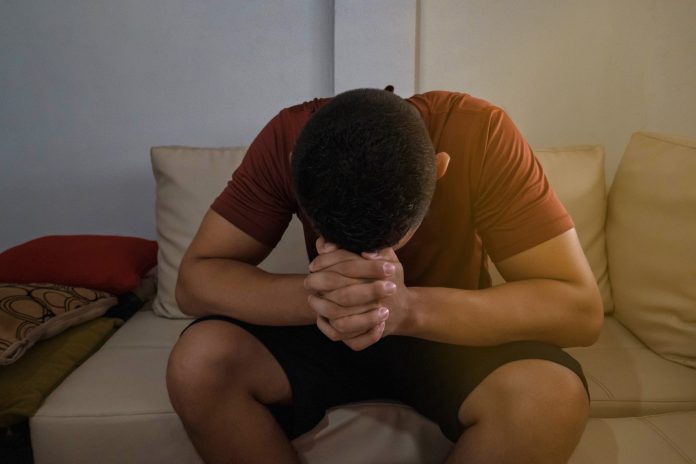Kirsty Mason, copywriter at men’s health company, Numan, discusses mental health inequalities among ethnic minorities, LGBT+ and middle-aged men
Men’s mental health has evolved in recent decades, with huge progress made to combat discriminative societal expectations. But have some men been overlooked?
Although unequal opportunity is not a new phenomenon, the pandemic has heightened social inequalities. The stay at home order favoured the wealthy and ethnic minorities endured a greater risk of both catching and dying from COVID-19. The effect on mental health has been harrowing.
Men are 3 times more likely than women to commit suicide and are less likely to seek healthcare, despite reporting lower levels of life satisfaction than women.
The issue of men’s mental health is enormous – and the problem runs deep.
Men who are faced with social limitations have an added burden on their mental health, with frightening statistics to reflect this.
Let’s take a look at the problematic relationship between unequal groups of men and mental health.
Ethnic minority men
Men from ethnic minority backgrounds are faced with discrimination, racism and stigma. A Race and Disparities report by Public Health England (2018) found that Black men were 10 times as likely to suffer from a psychotic disorder in the last year when compared to White men. Ethnic minorities are also much more likely to be detained under the Mental Health Act than White people.
Despite coming from high-risk communities, ethnic biases – conscious or subconscious – may explain why ethnic minorities don’t receive the same level of mental health care as White people. Ethnic minorities face greater mental health stigma and are hindered by a system that doesn’t adapt to suit the needs of the patient.
When ethnic minority patients do come into contact with a doctor, they’re more likely to report a negative experience and poorer outcome. Research has even found that doctors are more hesitant to diagnose emotional problems and depression in ethnic minority patients.
In addition, ethnic minority patients are more likely to be restrained in a hospital setting than to receive outpatient mental health care. With a system of care that neglects the mental health of ethnic minorities, it’s no surprise that White men are more likely to make a recovery.
So, what’s being done to improve mental health services to ethnic minorities? In August 2020, a national pledge to the senior leaders of the NHS mental health trust called on them to tackle the problem. Although this is a minor step to combat a colossal issue, the pledge at least acknowledges the need to take action.
LGBTQ+ men
LGBTQ+ men are more likely to suffer from common mental health problems such as depression, anxiety and stress. In some ways, this may be down to the bullying, marginalisation and increased level of hate crime experienced by the LGBTQ+ community.
A Gay and Bisexual Men’s Health survey found that 3% of gay men had attempted to take their own lives in the past year. This compares to 0.4% of men in general.
Aside from being a marginalised group in society, one of the greatest threats to LGBTQ+ men is the mental burden of bullying. In 2021, Scotland made history by becoming the first country in the world to embed LGBTQ+ rights into the school curriculum. In a bid to challenge homophobia and transphobia, the curriculum will cover LGBTQ+ history, explore gender and sexual identity, and learn about the challenges the community has faced over the years, including the HIV and AIDS epidemic. It’s been hailed as a victory for tackling and preventing homophobic and transphobic attitudes.
Middle-aged men
Men aged between 45-49 have the highest rates of suicide in the UK. It’s an age range that coincides with divorce rates, with the latest figures showing that the average age for a man to divorce (in opposite-sex couples) is 47 years old.
The statistics may, in part, be down to the social scenarios that middle-aged men frequently face, as the age group is at greater risk of facing challenging life events that could trigger negative mental health. This could be the death of a parent, an empty nest or declining health.
On top of this, as men age, their testosterone levels naturally decline by around 1-2% per year. Although this is a normal part of the ageing process, for some men, the drop in testosterone can cause symptoms such as depression. This biological process has been used to back up a controversial phenomenon: male menopause. Also known as ‘andropause’ or colloquially, ‘manopause’, the term describes the symptoms associated with declining testosterone levels. This can include depression, low mood, irritability, fatigue and mood swings.
Although progress has been made to improve men’s mental health services, statistics clearly demonstrate how certain groups of men are suffering more than others. While improvements are made to men’s mental health care, it’s critical that extra support is provided to the men who need it most.
Mental health charities working to break the stigma around men’s mental health and inequalities include StrongMen, Rethink Mental Illness, Mind, CALM and the Mental Health Foundation. There are also plenty of online resources available to help men navigate opening up with friends about mental health and find the right support service.
Medically reviewed by Dr Luke Pratsides.











